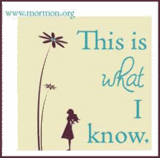In honor of Down Syndrome Awareness Month, I thought I'd share a little genetics lesson.
From the National Down Syndrome Society:
In every cell in the human body there is a nucleus, where genetic material is stored in genes. Genes carry the codes responsible for all of our inherited traits and are grouped along rod-like structures called chromosomes. Normally, the nucleus of each cell contains 23 pairs of chromosomes, half of which are inherited from each parent.
Down syndrome is usually caused by an error in cell division called "nondisjunction." Nondisjunction results in an embryo with three copies of chromosome 21 instead of the usual two. Prior to or at conception, a pair of 21st chromosomes in either the sperm or the egg fails to separate. As the embryo develops, the extra chromosome is replicated in every cell of the body. This type of Down syndrome, which accounts for 95% of cases, is called Trisomy 21.
(Nondisjunction is what happened in Miss Banana. I'd also like to emphasize the point that Miss Banana's extra genetic material comes from either Dr. C or myself...it's not an alien chromosome that came out of nowhere. Miss B simply got an additional copy of either Dr. C or I's genetic makeup, not a separate "Down syndrome chromosome". It is the fact that she has that extra genetic material that causes her to have Down syndrome.
As an example...it's like she got two doses of my stubbornness and one dose of Dr. C's stubbornness...NOT one dose of my stubbornness, one dose of Dr. C's stubbornness and one dose of Down syndrome stubbornness. Hope that makes sense!
P.S. We don't know if it was me or Dr. C that gave her the extra chromosome. And it doesn't matter.)
The two other types of Down syndrome are called mosaicism and translocation. Mosaicism occurs when nondisjunction of chromosome 21 takes place in one-but not all-of the initial cell divisions after fertilization. When this occurs, there is a mixture of two types of cells, some containing the usual 46 chromosomes and others containing 47. Those cells with 47 chromosomes contain an extra chromosome 21. Mosaicism accounts for about 1% of all cases of Down syndrome. Research has indicated that individuals with mosaic Down syndrome may have fewer characteristics of Down syndrome than those with other types of Down syndrome. However, broad generalizations are not possible due to the wide range of abilities people with Down syndrome possess.
Translocation accounts for about 4% of all cases of Down syndrome. In translocation, part of chromosome 21 breaks off during cell division and attaches to another chromosome, typically chromosome 14. While the total number of chromosomes in the cells remain 46, the presence of an extra part of chromosome 21 causes the characteristics of Down syndrome.
And now we come to the end of our little genetics lesson.
Feel free to ask questions if you have any!
Mysterious Moving Magnets
1 week ago









1 comment:
My doctor asked if Chuck and I wanted to be tested to see which of us gave Beth the extra, but it didn't matter to us either.
Post a Comment